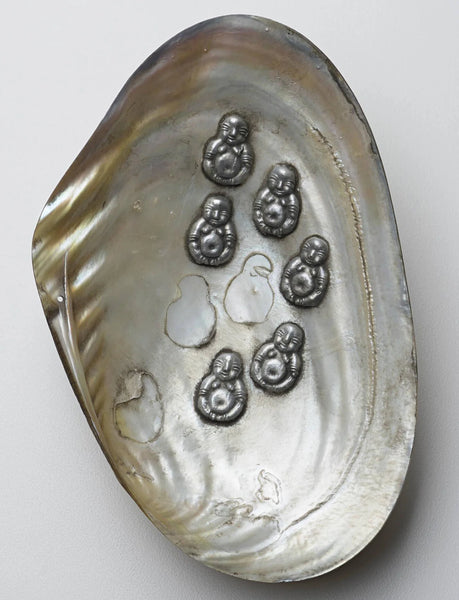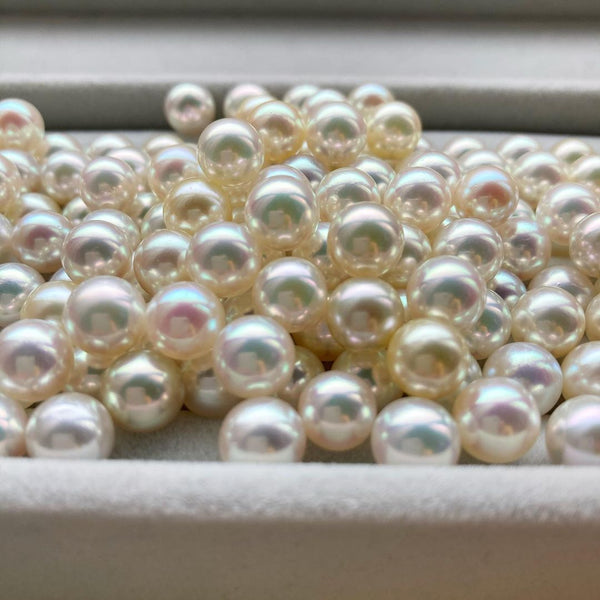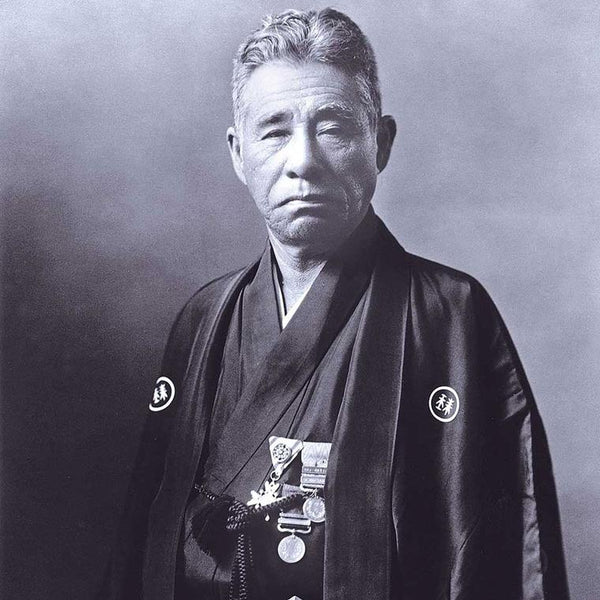
The Beginning
At the end of the XIX-th century, Henry Lister Jameson (a British zoologist who studied pearl formation) noted:
"The man who solves the riddle of pearl cultivation will not only have the privilege of contributing to scientific and industrial progress, but his name will deserve the honor of entering the history of empire builders."
The onset of pearl culture, or 'periculture' (from French, meaning human intervention in pearl birth), dates back to the XIII-th century. It originated in China, where pearls were cultivated in the likeness of Buddha. The Chinese discovered that if a small dome (or dome-like shape) was attached to the shell of a freshwater mussel under its mantle, the mussel would eventually cover it with nacre, creating a blister pearl that mirrors the shape of the implant.

When the blister pearl is cut out from the shell and the implant removed, the void on the inside is filled with a hardening substance and closed off with a piece of nacre cut from the shell. This type of composite pearl is called a mabé. This method is still used to cultivate both saltwater and freshwater hemispherical pearls today.

Despite numerous attempts to cultivate spherical pearls over centuries, they were mostly unsuccessful and certainly not stable.
In 1761, Swedish naturalist Carl Linnaeus experimented with techniques for cultivating pearls, but the results were only semi-spherical pearls attached to the shell, not free-floating spheres in the oyster.
The first person to achieve this was British marine biologist William Saville-Kent, living in Northwestern Australia, and systematic research into pearl cultivation began in China at the end of the XIX-th century. This research was continued and developed in Japan with cultivating the Japan native Akoya pearl, and today Japan is credited as the homeland of the cultured pearl, renowned worldwide.

As a friend of mine once said: "I always thought pearls were only white, round, and small." No doubt her mental image was referring to Akoya.
Indeed, when it comes to pearls, that's what most people envision when they think of a pearl strand.
White, round, and shiny, the Akoya is the classic cultured pearl, farmed for over a hundred years now. The finest specimens exude a magnificent glow from within, rarely seen in other types of cultured pearls. This is why Akoya is still considered the gold standard for pearl jewelry.

Those familiar with Akoya have surely heard of the legendary Kokichi Mikimoto. His story is so intertwined with the pearl industry that "Mikimoto" has become practically synonymous with cultured pearls. Thanks to his tenacity, business acumen, strategic planning, successful marriages, and long life, Mikimoto has remained a legendary figure in pearl culture, with his brand being the most recognized pearl brand worldwide.

The journey towards this colossal accomplishment started in the late 19th century. It was in 1890 that Mikimoto launched his first experimental pearl farm on the small island of Benten-shima. Inspired by the ancient Chinese method of cultivating blister pearls, he aimed to reproduce this technique using Japanese Akoya oysters (Pinctada fucata martensii). This method involved grafting a nucleus into the oyster, then letting the oyster coat the nucleus with layers of nacre, eventually creating a pearl.
Unfortunately, Mikimoto's initial attempts were marked by failure. His first harvest in 1891 yielded not a single pearl. Rather than being disheartened, he redoubled his efforts, grafting a variety of nuclei including pieces of abalone shell, coral, and bone into 5,000 oysters, only to be met with another failed harvest.
In the face of adversity, Mikimoto reflected on his failures and suspected that they might be linked to the material used as nuclei. He hypothesized that using mother-of-pearl beads, which are made from the same substance as pearls, could be the key to success. As it turned out, his hunch was right. In 1893, Mikimoto managed to cultivate his first blister pearls using mother-of-pearl beads as nuclei.
Mikimoto's success didn't end there. He persevered in his research and experimentation, and by 1916, at the age of 58, he started mass production of Akoya cultured pearls. This year marks the official birth of the cultured pearl industry, a remarkable turning point in the world of pearls and jewelry. Kokichi Mikimoto's relentless pursuit of innovation transformed the pearl industry and paved the way for the widespread availability and popularity of cultured pearls we witness today.
To be continued

